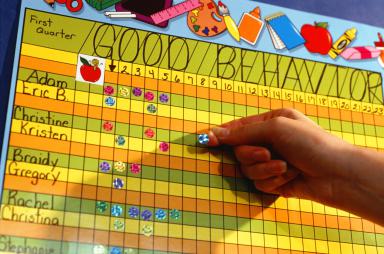Topic #6 – Beyond Rewards –“Hooked on Learning”
According to Alfie Kohn, “To induce short-term compliance, behavioral manipulation is the best we’ve got.” However, if the goal of the teacher is to tap into students intrinsic interests in doing quality work, and to allow students to become life-long self-directed learners, it does not make any sense to ask, “What is the alternative to rewards?” Kohn explains that rewards have never moved us towards these types of objectives- that, it is only rewards that interfere with the ability to reach them (Kohn, 1993). Thus, Kohn (1993) has provided 3 components for motivation that should be considered- collaboration, content, and choice.
Many teachers continue to question, “How do you motivate students?” The answer is simple- children do not need to be motivated. Children are inherently interested to learn about the world around them, and make sense of their environments. Students will generally exhibit a sense of wonder and passion for challenge when they are encouraged to think about what they are doing (rather than feeling controlled by the teacher). Moreover, the job of educators is not to make students motivated, nor to sit passively. What we can do is influence how they motivate themselves. In order to do this, we cannot wait until an individual is interested, but to offer a stimulating environment that includes options- leading to successful learning and a high level of performance. However, a teacher cannot remove extrinsic rewards tomorrow and expect students to leap out of their seats cheering, “Hooray!” It is essential that teachers have an open conversation (grade level appropriate) to discuss about why people learn and what impact rewards really have on them.
So, how do we tap into children’s motivation to create a sense of discovery?
- Allow for more active learning– Provide students with the opportunity to see, touch and do- rather than just sit at a desk and listen. Give students the opportunity to speak more freely- oftentimes, educators put too much emphasis on being quiet. Teachers who depart from this norm by letting students participate and talk more freely are viewed as having lost control of their classrooms.
- Give the reason for an assignment– If students are not provided with the reasoning behind an assignment, students may demonstrate a low quality of engagement. Educators must give students cues as to why they should be motivated (provide explanations).
- Elicit their curiosity– When reading stories, prompt student’s to inquire and engage. Pose questions such as: “What do you think will happen next?” Allow students to make predictions.
- Set an example– It is essential that teachers set an example for their students. Teachers can admit to student’s that they don’t know the answer to something- demonstrating the tenacity in the face of failure, or showing students how to make sense of a piece of writing that might be difficult to understand.
- Welcome mistakes– “Mistakes are our friends.” Allow students to make mistakes- they must feel safe enough to take intellectual risks.
The 3 C’s – Collaboration, Content & Choice
- Collaboration: “Cooperative Learning” – Encourage students to work and learn together. According to Piaget & Dewey, learning works best when people share information and ideas, challenging someone else’s interpretation and having your own (within a climate of social support).
- Content: “Things worth knowing”– It is essential that the tasks assigned in the schools are worthwhile- that they have connection within the lives, experiences and interests of the students. Many teachers will pile on homework that is irrelevant or does not include creative thought (very much rote learning). The learners interest must be the focal point- adding a variety of different kinds of tasks, which require different skills will allow intrinsic motivation to flourish.
- Choice: “Autonomy”– If students simply follow orders, they will not be intrinsically motivated to participate in the task. Ask the students, “What is the most exciting way we could study this next unit?” By allowing students to make choices throughout the day, they will develop a sense of autonomy. For example, during one block, allow students to make a decision on something they want to do: getting a head start on homework, writing in their journals, work on an art project, or reading library books. Simply put, allow students to be active participants in their own learning.



This is such a good topic to pursue. Your understanding of how to help students develop intrinsic motivation is clear and as you continue to teach and used the strategies you have cited, you will find how the level of student engagement and excitement about learning increases.